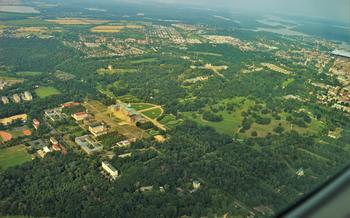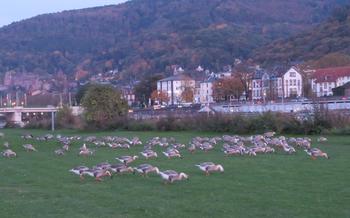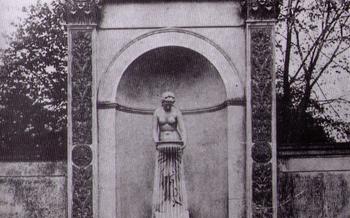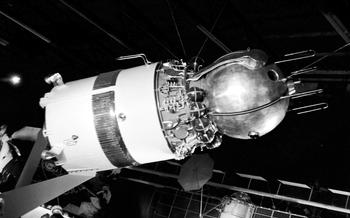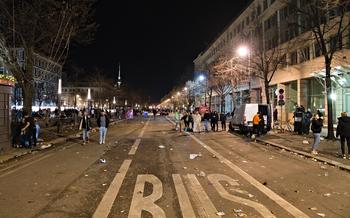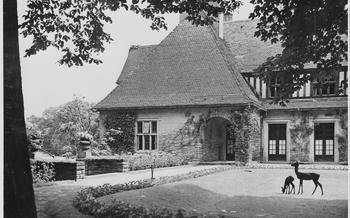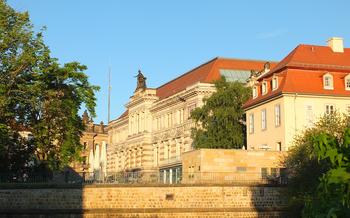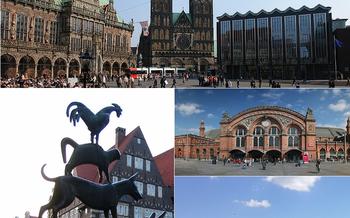
Schloss Schwetzingen
- A Palace in a Garden
- Exploring the Palace
- The Marble Hall
- The Mosque
- The Temple of Apollo
- Architecture
- Purpose
- Acoustics
- Anecdote
- The Bathhouse
- The Pheasantry
- The Dairy
- The Ice House
A Palace in a Garden
The origins of Schloss Schwetzingen and its enchanting gardens can be traced back to the 17th century when Elector Karl Ludwig von der Pfalz, inspired by the grandeur of Versailles, envisioned a magnificent palace surrounded by picturesque gardens. The palace's construction began in 1697, and over the following decades, it underwent several expansions and renovations, reflecting the changing tastes and styles of its successive rulers.
The architectural style of Schloss Schwetzingen is predominantly Baroque, characterized by its elaborate ornamentation, curved lines, and harmonious proportions. The palace's exterior boasts intricate carvings, statues, and decorative elements that add to its grandeur. The interior of the palace is equally impressive, with grand halls, elegant chambers, and opulent furnishings that showcase the wealth and power of the ruling family.
The extensive gardens surrounding Schloss Schwetzingen are a masterpiece of landscape architecture, designed to complement the palace's grandeur and create a harmonious blend of nature and artifice. The gardens are divided into several sections, each with its own unique character. The French-style formal gardens, with their symmetrical layout, geometric flower beds, and manicured hedges, provide a striking contrast to the more natural and informal English Garden.
One notable anecdote associated with Schloss Schwetzingen involves a visit by the renowned composer Wolfgang Amadeus Mozart. In 1777, at the tender age of 21, Mozart performed for the court at the palace. His virtuosic performance on the harpsichord left a lasting impression on the audience, solidifying his reputation as a musical prodigy.
Exploring the Palace
The interior of Schloss Schwetzingen is as awe-inspiring as its exterior. Grand rooms and halls adorned with intricate stuccowork, shimmering chandeliers, and elegant furnishings create a sense of opulence and grandeur. Visitors can wander through the State Apartments, which were once used to host royal guests and dignitaries. The Mirror Cabinet, with its walls covered in mirrors and shimmering crystal chandeliers, is a testament to the palace's exquisite craftsmanship.
The palace also houses a valuable collection of paintings and sculptures. Masterpieces by renowned artists such as Rembrandt, Rubens, and Canaletto grace the walls of the galleries. The art collection reflects the eclectic tastes of the Electors who resided in the palace, and it offers visitors a glimpse into the cultural and artistic influences that shaped the court of Schwetzingen.
But perhaps the most intriguing aspect of the palace's interior is the legend of the hidden treasure. Rumor has it that one of the Electors, known for his love of collecting precious objects, stashed away a fortune in gold and jewels within the palace walls. Despite numerous searches, the treasure has never been found, and it remains a mystery to this day.
The Marble Hall
The Marble Hall, the palace's breathtaking centerpiece, stuns visitors with its sheer size and sumptuous grandeur. Completed in 1752, the hall is a testament to the Baroque style's opulence and extravagance. Its walls are adorned with exquisite marble sculptures and frescoes, creating a celestial atmosphere. The hall's soaring ceiling, adorned with intricate stuccowork, adds to its majestic aura.
Originally intended for lavish banquets and festivities, the Marble Hall served as a stage for grand court events. Its polished marble floor, reflecting the shimmering chandeliers, created a magical ambiance for dancing and celebrations. The hall's size and acoustics made it an ideal venue for musical performances, with the sweet melodies echoing throughout the grand space.
One notable anecdote associated with the Marble Hall involves a secret meeting held during the Napoleonic Wars. In 1808, a group of conspirators gathered in the hall under the cover of darkness to plot against Napoleon's rule. Their clandestine meeting aimed to organize resistance and strategize for the liberation of Germany. The Marble Hall, with its grandeur and secrecy, provided the perfect setting for this audacious act of defiance.
The Mosque
In the heart of the Schwetzingen Gardens, amidst the lush greenery and colorful flowerbeds, stands an architectural marvel that transports visitors to a distant land – the Mosque. Built in the 18th century upon the request of the Elector Carl Theodor, this remarkable structure is a testament to the Elector’s fascination with Islamic architecture and his desire to create a place of contemplation and serenity within his beloved gardens.
Inspired by the grandeur of the Great Mosque of Damascus, the Mosque at Schwetzingen is a stunning example of Moorish-inspired architecture. Its horseshoe arches, intricate tilework, and elegant minaret create a harmonious blend of Eastern and Western aesthetics. The interior of the mosque is equally captivating, featuring a prayer hall adorned with intricate stucco decorations, colorful tiles, and a magnificent mihrab that points towards Mecca.
Despite its religious inspiration, the Mosque at Schwetzingen was never intended to be a place of worship. Instead, it served as a picturesque garden folly, a place where the Elector and his guests could retreat for quiet reflection or engage in philosophical discussions. Its serene atmosphere and unique design made it a popular destination for leisurely strolls and gatherings, offering a glimpse into the Elector’s eclectic tastes and his appreciation for diversity.
Anecdote:
One sunny afternoon, a Muslim traveler named Omar found himself wandering through the gardens of Schwetzingen. Intrigued by the sight of the Mosque, he approached the caretaker and asked for permission to enter. The caretaker, recognizing Omar’s genuine interest, welcomed him inside and shared stories about the history and significance of the Mosque.
As Omar stepped into the prayer hall, he was struck by the beauty and tranquility of the space. He couldn’t resist the urge to perform his prayers, feeling a deep sense of connection to his faith in this unexpected setting. After his prayers, Omar thanked the caretaker for his hospitality and expressed his gratitude for the opportunity to experience this unique place of worship.
The Temple of Apollo
Standing amidst the picturesque gardens, the Temple of Apollo is a testament to the enduring influence of classical architecture. Inspired by the ancient Greek temples, this elegant structure evokes a sense of awe and wonder.
Architecture
Its pristine white facade, adorned with intricate carvings and sculptures, reflects the harmonious proportions and symmetry that characterize Greek architecture. The temple's Doric columns, with their simple yet powerful design, lend a majestic presence to the structure.
Purpose
Originally conceived as a concert hall, the Temple of Apollo served as a venue for musical performances and theatrical productions. Its exceptional acoustics, carefully engineered to enhance the clarity and resonance of sound, made it a favored location for musicians and composers.
Acoustics
The temple's design incorporates several acoustic features that contribute to its remarkable sound quality. The curved walls and vaulted ceiling create a reverberant space, allowing sound waves to bounce and amplify. The placement of the columns and the use of sound-absorbing materials further enhance the acoustics, ensuring an immersive and captivating auditory experience.
Anecdote
In the heart of the temple, a memorable concert once took place, forever etched in the annals of musical history. A renowned orchestra, led by a virtuoso conductor, performed a stirring rendition of Beethoven's Symphony No. The audience, captivated by the exquisite acoustics and the orchestra's masterful performance, erupted into thunderous applause, their spirits soaring with the transcendent power of music.
The Bathhouse
The Bathhouse at Schwetzingen Palace, constructed in the 18th century, stands as a testament to the palace's commitment to luxury and well-being. Inspired by ancient Roman bathhouses, this architectural gem boasts a striking design that harmoniously blends classical elements with modern comforts.
The Bathhouse's exterior exudes an air of grandeur, with its symmetrical facade adorned with intricate carvings and sculptures. Inside, visitors are greeted by a series of opulent chambers, each serving a specific purpose in the bathing ritual.
The Tepidarium, with its warm, soothing atmosphere, served as a preparatory space for bathers to gently transition into the bathing experience. The Caldarium, the hottest chamber, featured a large pool of steaming water, allowing bathers to immerse themselves in the therapeutic heat.
After experiencing the intense heat of the Caldarium, bathers could retreat to the Frigidarium, a refreshing cold plunge pool, to invigorate their bodies and senses. The process concluded in the Apodyterium, a dressing room where bathers could relax and socialize after their rejuvenating experience.
In addition to the bathing pools, the Bathhouse also boasted a sauna, a relaxation area, and massage rooms, catering to the complete well-being of its visitors.
Anecdote:
During the reign of Elector Carl Theodor, the Bathhouse was a popular destination for the court and its guests. One evening, as the sun cast a golden glow over the palace grounds, the Elector and his entourage decided to indulge in a private bathing ritual.
With the Bathhouse beautifully illuminated by candlelight, the Elector and his companions immersed themselves in the warm, soothing waters of the Caldarium. As they relaxed and conversed, the sounds of gentle music filled the air, creating an atmosphere of tranquility and indulgence.
After their bathing experience, the Elector and his guests retired to the Apodyterium, where they enjoyed refreshments and engaged in lively conversation, their bodies and spirits rejuvenated by the restorative powers of the Bathhouse.
The Pheasantry
The Pheasantry at Schloss Schwetzingen is a captivating aviary that once housed a diverse collection of pheasants and other exotic birds. Established in the 18th century, it stands as a testament to the palace's rich history and connection to nature.
The Pheasantry's architectural design is both functional and aesthetically pleasing. Its spacious enclosures, adorned with intricate metalwork, provide a comfortable habitat for the birds while also allowing visitors to observe them closely. The aviary's central feature is a large, domed structure that serves as a gathering place for the pheasants, offering shelter and protection from the elements.
Over the years, the Pheasantry has been home to a wide variety of pheasants, including the resplendent Golden Pheasant, the elegant Lady Amherst's Pheasant, and the striking Ring-necked Pheasant. Visitors can also spot other exotic birds, such as peacocks, guinea fowl, and doves, which roam freely within the aviary.
Anecdote:
One summer afternoon, as the sun cast golden rays across the Pheasantry, a young boy named Johann wandered into the aviary. Intrigued by the vibrant colors and melodious calls of the birds, he spent hours observing their graceful movements and interactions. Among them, he noticed a particularly majestic Golden Pheasant with a long, flowing tail that shimmered in the sunlight. Captivated by its beauty, Johann decided to return to the Pheasantry every day, bringing with him small offerings of seeds and fruits for the birds. Over time, the Golden Pheasant grew accustomed to Johann's presence and would often greet him with a gentle nod of its head. Through his daily visits, Johann developed a deep appreciation for the Pheasantry and its inhabitants, fostering a lifelong love for nature and the wonders of the animal kingdom.
The Dairy
The Dairy, also known as the Meierei, is a charming and rustic building situated within the picturesque gardens of Schwetzingen Palace. Constructed in the 18th century, it served as a functioning dairy, producing fresh milk and dairy products for the court and the surrounding community.
The Dairy's architecture is a testament to its practical purpose, featuring a simple yet elegant design with whitewashed walls, a red-tiled roof, and arched windows. Inside, visitors can witness the remnants of its former use, including the original milk processing equipment, such as the copper kettles and churn, which have been lovingly preserved.
In addition to its historical significance, the Dairy offers a glimpse into the daily life of the court and the surrounding area. The production of milk and dairy products was an essential part of the local economy, and the Dairy played a vital role in providing sustenance and nourishment to the community.
Anecdote:
During one of my visits to Schwetzingen Palace, I had the opportunity to participate in a cheese-making workshop held at the Dairy. Under the guidance of an experienced cheesemaker, I learned the traditional methods of cheese production, from curdling the milk to aging and shaping the cheese. The workshop culminated in a tasting of the freshly made cheese, which was a delightful and educational experience.
The Ice House
In the midst of the lush gardens, a peculiar structure stands out—the Ice House, a testament to the ingenuity of the palace's inhabitants. Constructed in the 18th century, this subterranean marvel served a crucial purpose in an era before refrigeration.
The Ice House was designed to store ice harvested during the winter months, a precious commodity essential for preserving food and creating refreshing beverages during the hot summer. Its unique design featured a double-layered wall with an insulating layer of straw, ensuring that the ice remained frozen even on the warmest days.
Inside the Ice House, visitors can marvel at the massive ice chamber, its walls lined with thick blocks of ice. The temperature within remains several degrees below zero, a testament to the effectiveness of the Ice House's design.
Anecdote:
In the sweltering summer heat, a young prince sought refuge within the Ice House. As he stepped inside, he was enveloped by a wave of icy air, a stark contrast to the scorching heat outside. He marveled at the glistening ice blocks, so meticulously harvested and stored for the comfort of the palace's residents.
Sipping on a refreshing lemonade chilled with ice from the Ice House, the prince couldn't help but be amazed by the ingenuity of his ancestors. Their foresight in constructing such an effective cooling system allowed them to enjoy cool drinks and preserve food even during the hottest months, a luxury that would have been unimaginable without the Ice House.

